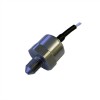High range pressure measurement Universal Serial Bus (USB) interface computer connection pressure sensing devices.
Products
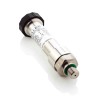 33X High Accuracy Digital Output Pressure Sensor - High precision pressure transducer with an accuracy of 0.05% full scale with a RS485, USB or RS232 digital interface for connecting to a PC.
33X High Accuracy Digital Output Pressure Sensor - High precision pressure transducer with an accuracy of 0.05% full scale with a RS485, USB or RS232 digital interface for connecting to a PC.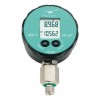 LEO3 Current or Digital Output Pressure Gauge - LCD digital pressure gauge powered externally by a 2 wire series 4-20mA current loop or a digital interface.
LEO3 Current or Digital Output Pressure Gauge - LCD digital pressure gauge powered externally by a 2 wire series 4-20mA current loop or a digital interface.
 UPS-HSR USB Pressure Sensor with High Sample Rate Logging
UPS-HSR USB Pressure Sensor with High Sample Rate Logging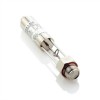 35X HTC High Temperature Digital Pressure Sensor (< 300 degC)
35X HTC High Temperature Digital Pressure Sensor (< 300 degC)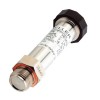 35X Flush Diaphragm Digital Output Pressure Sensor
35X Flush Diaphragm Digital Output Pressure Sensor
Applications
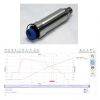 70,000 psi usb pressure sensor for calibration use with hydraulic screw press and PC computer - An ultra high range digital pressure sensor for calibration use to measure pressure of hydraulic oil over a range of 0 to 70,000 psi g from the Autoclave F-250-C female process connection, and sending the corresponding pressure reading through USB interface to the PC monitoring and logging software.
70,000 psi usb pressure sensor for calibration use with hydraulic screw press and PC computer - An ultra high range digital pressure sensor for calibration use to measure pressure of hydraulic oil over a range of 0 to 70,000 psi g from the Autoclave F-250-C female process connection, and sending the corresponding pressure reading through USB interface to the PC monitoring and logging software. 1000 barg hydraulic spike pressure sensor for testing robotic automation - A high range fast response digital pressure sensor for industrial robotic automation testing use to measure pressure of hydraulic pressure spikes over a range of 0 to 1,000 bar g from the G1/4 male process connection, and sending the corresponding USB signal through the USB mini B connector electrical connection.
1000 barg hydraulic spike pressure sensor for testing robotic automation - A high range fast response digital pressure sensor for industrial robotic automation testing use to measure pressure of hydraulic pressure spikes over a range of 0 to 1,000 bar g from the G1/4 male process connection, and sending the corresponding USB signal through the USB mini B connector electrical connection.
Related Product and Application Guides
Measuring high range pressure is typically required when working with hydraulic systems that generate large loads and forces, such as cranes, lifts, construction equipment, and structural test machines.
On hydraulic systems the pressure is often in the order of a few hundred (x100) bars or a few thousand (x1000) psi. Hydraulic pressures can be highly destructive to sensitive components such as measurement instrumentation, and therefore these devices have a very robust mechanical design to withstand the rapid rise and fall of very high pressures over many cycles.
It is also possible to measure pneumatic systems with very high pressures. In some ways pneumatic systems are less destructive than hydraulic systems because there is no fluid movement to create a hammer effect, however the safety risks are a greater concern, because of the risk of escaping high pressure gas which is capable of propelling objects to a high velocity.
Pressure units which are used to describe high pressure ranges include bar (bar), megapascals (MPa) or pounds force per square inch (psi, lbf/in2), or kilopounds force per square inch (kpsi, ksi).
The Universal Serial Bus (USB) interface is a popular digital interface for quick and easy connection of measurement devices to desktop & laptop computers and other digital measurement instrumentation.
A USB connection provides a global standard for the physical electrical connection, communication and powering of digital sensors and measurement instruments. A single cable is used for sending all the read & write commands, and providing a low dc supply voltage.
USB is a popular method for connecting measurement devices together in a research laboratory environment on experimental test rigs, where all test equipment is close by on the same test bench or rig.
The majority of USB measurement devices come with application software which can be installed on a laptop or desktop computer. USB provides the user with a plug & play set-up that can be up and running very quickly without the need for wiring, separate power supplies or signal conditioning instrumentation.
Pressure sensors are measurement devices for detecting variations in pressure of liquids or gases. Typically a pressure sensor is made of two subcomponents, an electromechanical assembly on the frontend, and a signal conditioning module on the backend.
The frontend of the pressure sensor is connected directly via a thread or clamped seal to a pipe or vessel containing the liquid or gas to be measured. The pressure generated by the liquid or gas will apply a force to a sensitive exposed surface area within the electromechanical assembly which produces a physical change to the material, such as a deformation. This physical change is translated into an electrical change by smaller elements incorporated into the sensitive part of the assembly, typically on the reverse side of the surface in contact with the liquid or gas.
Since there are many different types of electromechanical technology used to measure pressure, producing very different electrical characteristics, it is necessary to add on a signal conditioning module to rationalise the electrical signal and convert it to one which is a commonly used standard within a particular industry or application.



